SSD Storage – Everything from A to Z
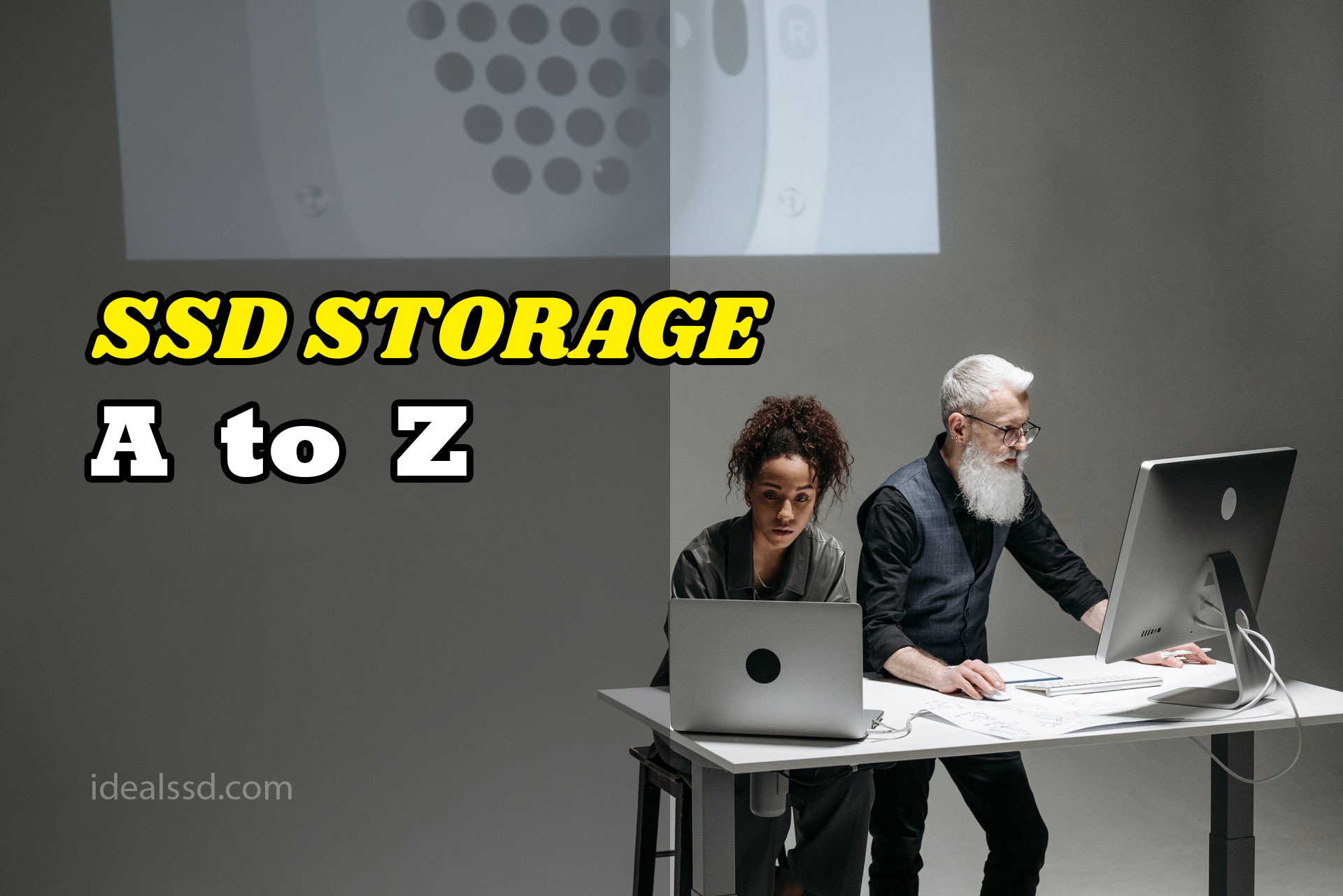
Are you considering an SSD for your next PC build or upgrade? If so, you’re making a great decision! Solid-state drives are incredibly fast and durable, and they offer a number of other benefits over traditional hard drives.
In this blog post, I’ll take a look at everything from A to Z related to SSDs – from the basics of how they work to the best ways to use them in your system. I’ll also discuss some of the pros and cons of SSDs so that you can decide if one is right for you.
What is an SSD?
Most computer users are familiar with the hard disk drive, or HDD. An HDD consists of spinning disks, or platters, that store data in magnetic form. HDDs have been the standard for computer storage for many years, but they are slowly being replaced by solid-state drives or SSDs.

SSDs are built using NAND Flash or DRAM memory chips instead of platters. This makes SSDs much faster than HDDs, as there are no moving parts to delay data access. In addition, SSDs are more durable than HDDs, as they are not susceptible to the same physical shocks and vibrations. As a result, SSDs are becoming increasingly popular for use in laptops and other portable devices.
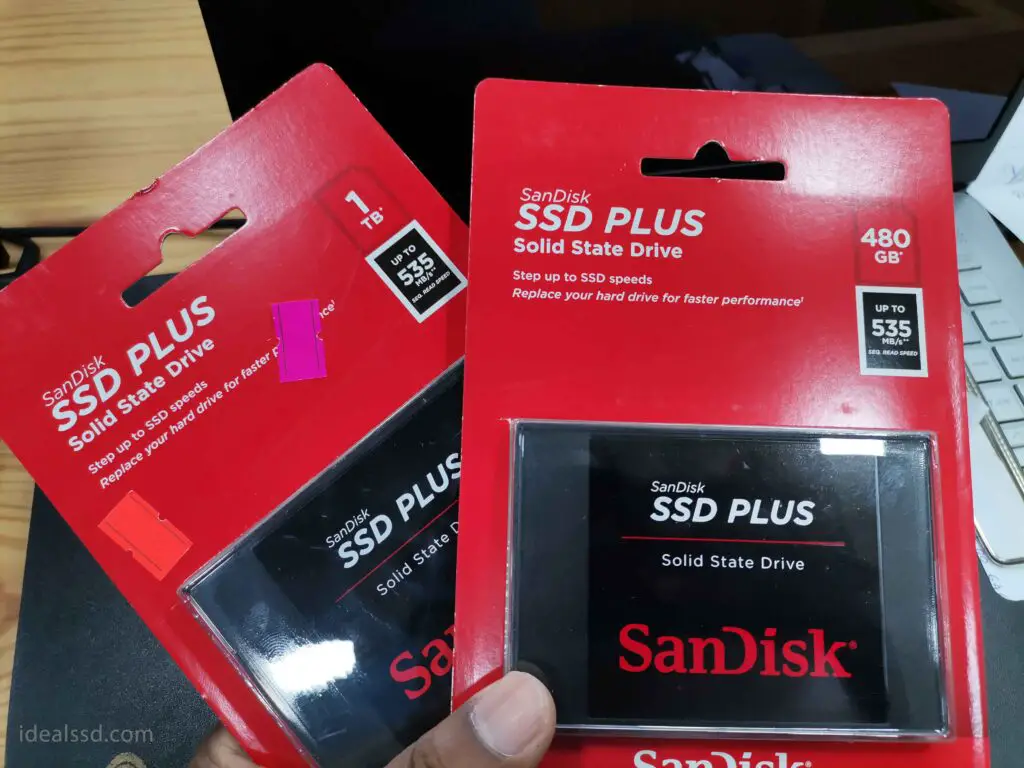
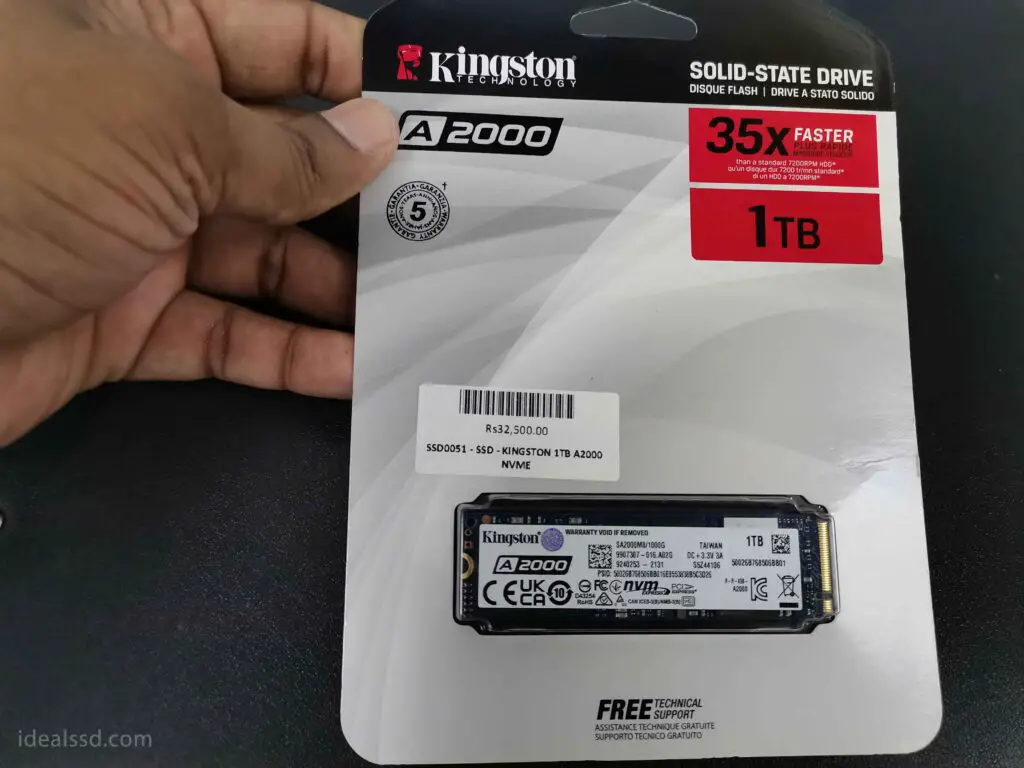
What Are the Benefits of Using an SSD?
- The main benefit of using an SSD is speed. Data access times on an SSD are much faster than on an HDD, due to the lack of moving parts. This can make a big difference when booting up your computer or opening large files.
- SSDs are more energy-efficient than HDDs, as they do not require the same amount of power to spin the disks. This can help to extend your laptop’s battery life.
- SSDs are also more durable than HDDs, as they are not susceptible to physical shocks and vibrations. This makes them ideal for use in laptops and other portable devices.
- Zero Noise Pollution: As there are no moving parts in an SSD, they produce zero noise pollution. This is in contrast to HDDs, which can produce a fair amount of noise due to the spinning disks.
- Higher resistance to extreme temperatures: SSDs can function in a wider range of temperatures than HDDs, making them ideal for use in harsh environments. But SSD also has an ideal temperature to operate. To know more about that refer to this. Safe Operating Temperature For SSD
- Reduced latency: SSDs have reduced latency due to the lack of moving parts. This can make a big difference when accessing data or files.
What Are the Drawbacks of Using an SSD?
- The main drawback of using an SSD is cost. SSDs are generally more expensive than HDDs, although the price difference is gradually narrowing.
- Another potential drawback of SSDs is that it has a finite number of write cycles. This means that an SSD will eventually wear out and need to be replaced. But don’t worry, this number is usually in the hundreds of thousands and the regular users will never hit this threshold.
How Much Faster Is an SSD?
SSDs boast impressive speed performance compared to HDDs. For example, if we compare random read performance, SSDs are more than 20000% faster than high-performance HDDs. The difference in speed is due to the fact that SSDs don’t have any moving parts, which allows them to access data much faster than HDDs.
In addition, SSDs are also more energy-efficient than HDDs, which means they can help to extend battery life. As a result, SSDs are the perfect choice for anyone looking for fast, reliable storage.
Even SSDs come as SATA and NVME drives. These drives further improve the speed of SSDs. SATA drives are limited to a transfer speed of 600MB/s, while NVME drives can reach speeds of up to 3500MB/s. This makes NVME drives around six times faster than SATA drives. If you’re looking for the fastest possible storage, then NVME is the way to go.
To know more about NVME SSD refer to these.
- What Is NVME SSD? The Future of Solid State Drives
- Best 1TB NVME SSDs Under $100
- How to use NVME SSD without m.2 slot
What Are IOPS?
IOPS is a performance metric used to benchmark storage devices, such as hard drives (HDDs) and solid-state drives (SSDs). The higher the IOPS rating, the more transactions per second the device can handle. IOPS is often used in reference to server workloads, as opposed to read/write speeds which are more relevant to consumer-grade storage devices.
When choosing a storage device for a server, it’s important to select one that can keep up with the demands of the workload. Otherwise, bottlenecks can occur and lead to reduced performance. For this reason, IOPS is an important metric to consider when selecting a storage device for a server.
An SSD with a high IOPS rating will be able to handle more input/output operations than one with a lower IOPS rating. When choosing a storage device for your needs, it is important to consider the IOPS rating to ensure that you select a device that can meet your performance requirements.
What Does Wear-Levelling Mean? Is It Important?
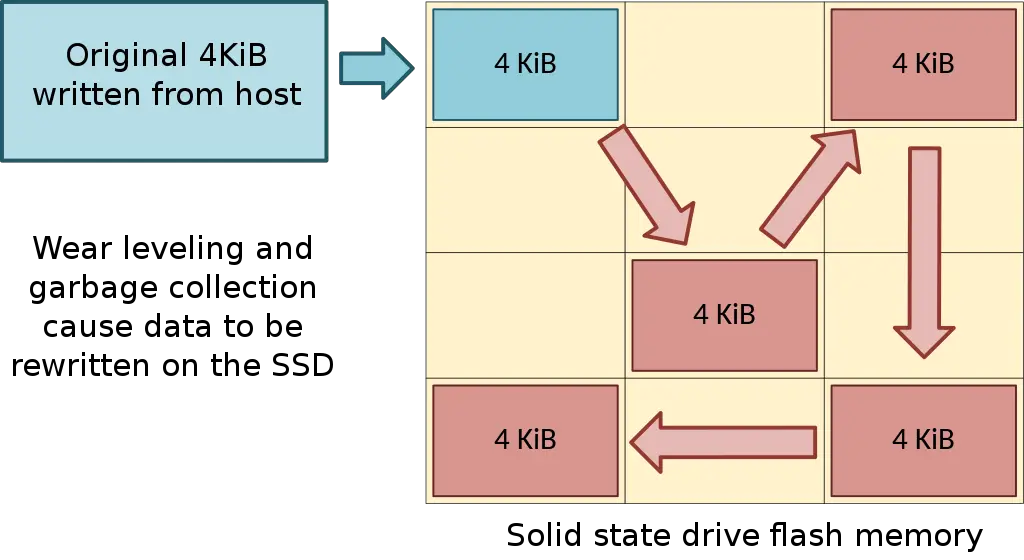
When data is stored on a NAND Flash memory chip, it is stored in cells. These cells will eventually wear out after a certain number of writes. In order to prevent anyone’s cell from being overused, SSD drives use a technique called wear-levelling.
Wear levelling helps to spread the storage of data across all cells in the chip, making sure that no one cell is used more than others. This ensures that the drive has a long lifespan and can withstand multiple write cycles.
Without wear-levelling, an SSD drive would only be able to withstand a few write cycles before the data starts to become corrupted. Therefore, wear-levelling is an essential part of maintaining a healthy SSD drive.
To get an in-depth knowledge regarding this. Refer to this. What Does SSD Wear Level Mean?
Why Does My SSD Have Less Capacity Than Advertised?
When shopping for a new SSD, you may have noticed that some drives have less capacity than advertised. For example, a 1TB drive may only show up as having 931GB of available space. This is because the drive’s manufacturer has set aside some of the capacity for over-provisioning (OP).
OP is a practice that involves reserving some of the drive capacity from the user area and dedicating it to the controller. By doing this, the controller can operate more efficiently and with greater endurance. This mechanism helps to increase the performance and endurance of the SSD.
While it may seem unfair that the user only has access to a portion of the drive’s total capacity, over-provisioning is essential for maintaining the high level of performance that users expect from an SSD.
Over-provisioning percentage formula is below.

To take a better idea refer to this table. These numbers belong to Kingston SSDs.
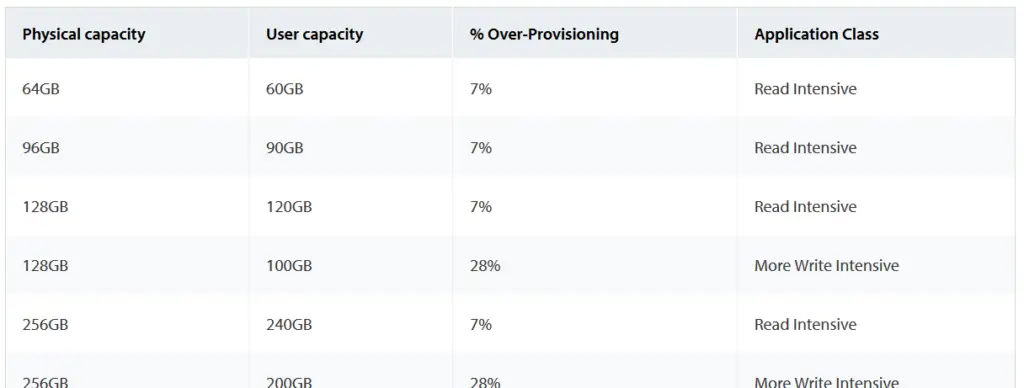
To see the full table refer to the below URL: https://www.kingston.com/en/blog/pc-performance/overprovisioning
Will My SSD Wear Out or Lose Performance the Longer I Use It?
One of the most common questions SSD manufacturers get is whether or not an SSD will lose performance or wear out over time. Well, the answer to this question is Yes but a regular user will never reach this threshold.
SSDs are designed to retain their performance for the lifetime of the drive. Most manufacturers measure drive endurance in TBW (Terabytes Written) and depending on drive capacity, one can write hundreds of terabytes, up to petabytes. As a result, it is very unlikely that you will ever reach the end of an SSD’s lifespan.
Speaking of Total bytes written (TBW) is a specification that gives you an idea of how many times you can rewrite the entire capacity of an SSD before it is likely to fail. In other words, it tells you how long the drive should last under normal use. The TBW specification is important because it can help you to choose a drive that will meet your needs.
What Are SMART Attributes in an SSD
SSDs have what’s called the SMART attribute. SMART is an acronym that stands for Self-Monitoring, Analysis and Reporting Technology. This technology was originally designed for HDDs in order to detect physical defects and predict impending failure.
However, SMART attributes can also be found on SSDs. The most common attributes monitored by SMART on SSDs are Wear Leveling Count and Uncorrectable Bit Error Rate (UBER). Wear Leveling Count tracks how often blocks of data are erased and written over time. UBER monitors the number of uncorrectable errors that occur when data is read from the drive.
While SMART attributes can be helpful in predicting SSD failure, it’s important to note that they are not perfect. In other words, an SSD can still fail even if its SMART attributes are within normal limits. However, monitoring your drive’s SMART attributes can give you a general idea of its health and how long it is likely to last. Refer to What is a SMART SSD? to know more about this.
To know more about SMART indicators refer to this.
- https://www.crucial.in/articles/about-ssd/smart-and-ssds
- https://www.intel.com/content/www/us/en/support/articles/000055367/memory-and-storage.html
Can an SSD Be Used in an External Enclosure via USB or E-SATA?
While solid-state drives (SSDs) are most commonly used in computers as internal hard drives, it is possible to use them in an external enclosure via USB. This can be beneficial if you want to take advantage of the speed and reliability of an SSD, but don’t want to replace your computer’s existing hard drive.
In order to do this, you will need to purchase an external hard drive enclosure that is compatible with SSDs. Once you have the enclosure, simply insert the SSD and connect it to your computer using either a USB or e-SATA cable.
Advantages Of Using An External Enclosure
- One advantage of using an SSD in an external enclosure is that it can be easily swapped between computers. This can be helpful if you have multiple computers and want to be able to access your data on all of them.
- Another advantage is that you can take your data with you when you travel. simply unplug the SSD from the enclosure and take it with you. This can be helpful if you need to access your data while on the go.
There are a few things to keep in mind if you decide to use an SSD in an external enclosure.
- Make sure that the enclosure is compatible with SSDs. Not all enclosures are, so it’s important to check before you buy.
- Since now the storage device is at outside, it’s important to store them in a safe place when not in use.
Overall, using an SSD in an external enclosure can be a great way to take advantage of the benefits of an SSD without replacing your computer’s existing hard drive. Just make sure to do your research and budget for the increased cost. To know more about enclosures refer to How to use NVME SSD without m.2 slot
Why Do SSDs Cost More Than HDDs?
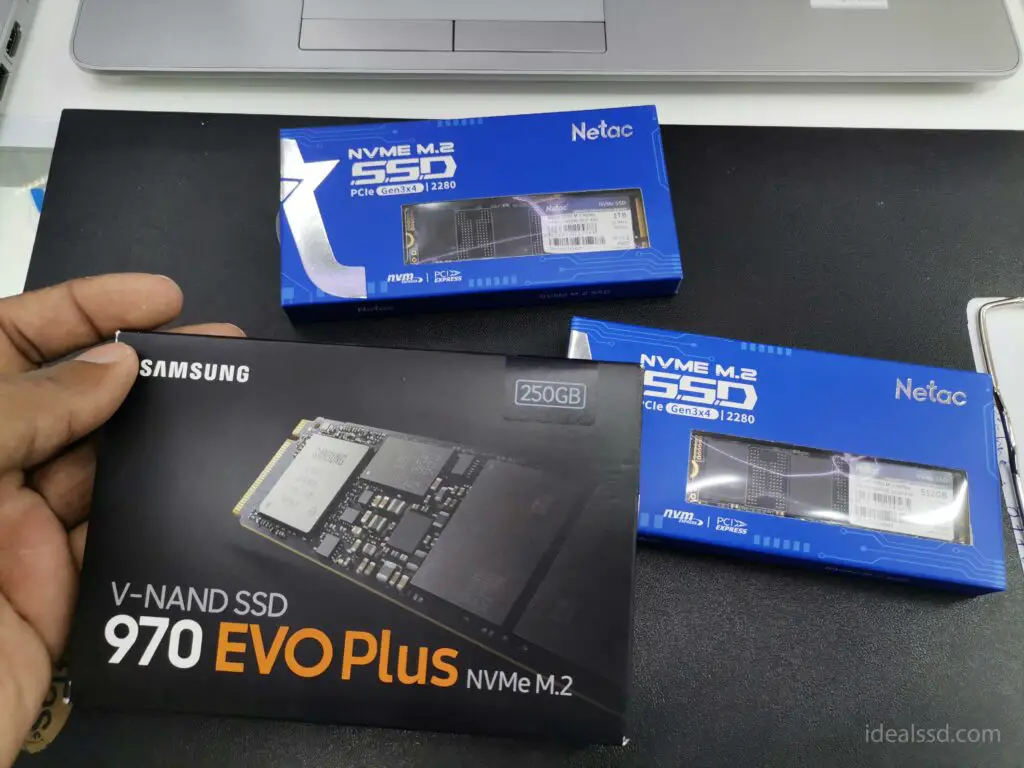
One reason SSDs cost more than HDDs is that they are a newer technology. HDDs have been around for decades, and their manufacturing process is well-established. In contrast, SSDs are still relatively new, and the manufacturing process is constantly evolving. As a result, SSDs tend to be more expensive than HDDs.
Another reason for the price difference is that SSDs use flash memory, which is more expensive per gigabyte than the spinning disk used in HDDs. For this reason, users who need a lot of storage space often opt for HDDs, even though they are slower and less energy-efficient.
Ultimately, the decision of whether to buy an SSD or HDD comes down to personal preference and budget. If you need a lot of storage space and are willing to sacrifice speed, an HDD may be the better option. However, if you can afford it, an SSD will provide a significant performance boost.
Are There Any Trade-Offs When Choosing an SSD Over an HDD?
The only benefit of HDDs is their lower cost per gigabyte. HDD s are ideal if you want to store a lot of data; SSDs, on the other hand, are ideal for high-performance applications. Frequently, an SSD is utilized as a boot drive while an HDD serves as the data storage device. This allows the computer to take advantage of the SSD’s speed while still being able to store a large amount of data.
Does an SSD Require Defragmenting Like an HDD?

Defragmentation is the process of reorganizing data so that it is stored in contiguous blocks. When data is fragmented, it is spread out across the storage medium, which can result in slower access times and decreased performance.
As a result, defragmentation can be an important part of maintaining optimal performance for your computer or other storage devices. There are a number of different software programs that can be used to defragment your data, and most operate in a similar fashion. First, the program will scan your storage medium for fragmented files. Once these files have been identified, the program will then begin to move the data into contiguous blocks. In some cases, defragmentation can take a significant amount of time to complete.
However, it is important to note that SSDs do not require defragmentation like HDDs. This is because SSDs do not suffer from the same type of performance degradation that HDDs and defragmentation are not necessary with SSDs because the way they store data helps to prevent fragmentation in the first place. Additionally, defragmenting an SSD can actually reduce its lifespan.
SSDs come with a finite number of write cycles, and each time a file is fragmented, it requires additional write cycles to store the data. As a result, defragmenting an SSD can actually reduce its lifespan. In addition, SSDs are generally much faster than traditional hard drives, so the benefits of defragmentation are often negligible. For these reasons, it’s best to avoid defragmenting an SSD unless absolutely necessary.
Refer Should You Defrag an SSD? to get more knowledge about this area.
What Mean by the Form Factors of SSD?
The form factor of an SSD refers to the physical dimensions and layout of the drive. The most common form factor for SSDs is the 2.5-inch drive. However, SSDs are also available in a variety of other form factors, including 1.8-inch, 3.5-inch, and M.2.
The form factor you choose will depend on the intended use of the drive as well as the available space in your computer case. For example, M.2 drives are ideal for laptops due to their smaller size, while 3.5-inch drives are typically used in desktop computers.
Ultimately, the best form factor for you will be one that meets your needs eg: the size of the drive, available space in your computer case, and the type of connector required by your motherboard.
What Is M.2? Is It the Same As NGFF?
M.2 is a specification for internally mounted computer expansion cards and associated connectors. It was developed by the PCI-SIG and SATA-IO standards organizations and is defined in the PCI-SIG M.2 and the SATA Rev. 3.2 specifications.
It was originally called the Next Generation Form Factor (NGFF), and then formally renamed M.2 in 2013. Many people still refer to M.2 as NGFF.
Why Would I Need To Enable My M.2 SSD Within the BIOS?
The BIOS is a set of basic instructions that helps your computer startup and do operation. When you power on your computer, the BIOS is responsible for running a series of tests to make sure everything is functioning properly. It then loads the operating system and hands control over to it.
The BIOS is stored in ROM, which means it can’t be changed without special hardware. However, most BIOS allow you to change certain settings, such as the boot order. The BIOS is a critical component of your computer’s operation, and if it becomes corrupted, it can prevent your computer from starting up properly.
Fortunately, there are ways to recover a corrupted BIOS, but it’s always best to avoid the problem in the first place by keeping your BIOS up to date.
Among other things, BIOS allows the user to enable or disable certain devices, including the M.2 SSD. In certain cases, the M.2 SSD socket could share PCIe lanes or SATA ports with other devices on the motherboard. If the SSD is not enabled in the BIOS, it will not be able to function properly.
Therefore, it is important to make sure that the SSD is enabled in the BIOS before attempting to install or use it. Failing to do so could result in data loss or corruption.
What Is the Benefit of Having Both B+M Key in M.2 SSD?
A B+M key in M.2 SSD refers to a double-sided flash memory module that can be inserted into an M.2 slot on a computer motherboard. The B+M key provides two paths for data transfer, one on each side of the module.
This allows for faster data transfer speeds than a single-sided module. Additionally, the B+M key provides greater flexibility in terms of compatibility with different types of M.2 slots. B+M keyed M.2 SSD will work with both B and M keyed M.2 slots, whereas a single-sided SSD will only work with one or the other. As a result, B+M keyed SSD is a more versatile option for those looking to upgrade their computer’s storage.
Are M.2 SSDs Hot-Pluggable?
No. M.2 SSDs are not hot-pluggable, meaning they cannot be installed or removed while the system is powered on. Attempting to do so could damage the drive and/or the system itself. For this reason, it’s important to make sure the system is powered off before installing or removing an M.2 SSD.
Additionally, it’s important to handle the drive with care to avoid static discharge, which can also damage the drive. With these precautions in mind, you can be sure to safely install or remove your M.2 SSD without damaging it.y
References
- SSD Endurance: https://blog.westerndigital.com/ssd-endurance-speeds-feeds-needs/
- Why TBW Matters in SSDs: https://www.chillblast.com/learn/why-tbw-matters-in-ssds/

